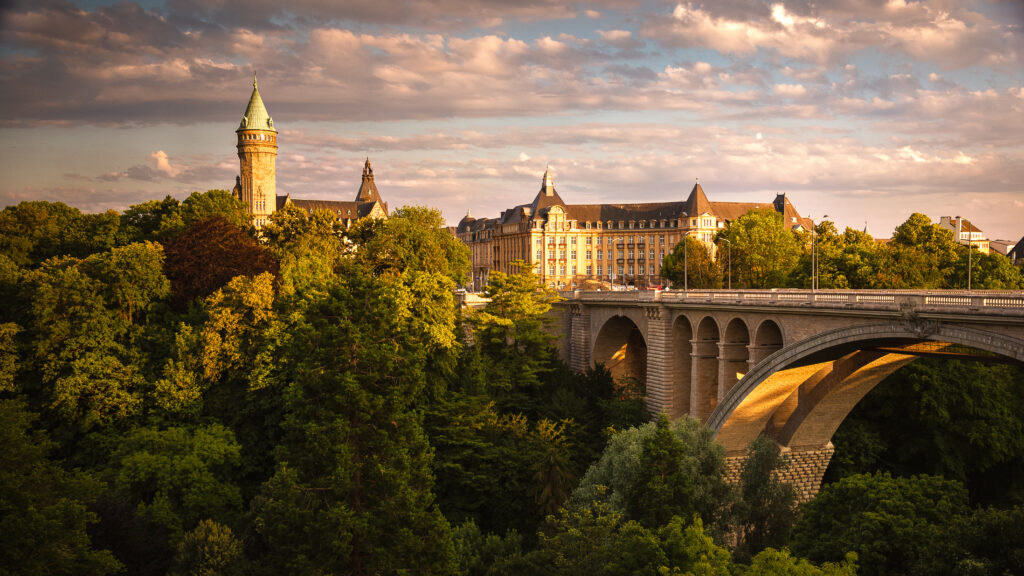
Those who claim that banks are Luxembourg's only focus should shut up for good! In reality, the Grand Duchy, which is one of our top 10 countries in which to retire, is a multi-faceted entity, offering an incredible variety of activities to be enjoyed solo, as a couple or with the family. Whether it's hiking, museums, castles, architectural gems, wine tours, entertainment venues... Whatever your preferences or budget, rest assured that Luxembourg offers so much diversity that there's something for everyone without having to fly from France.
1. The Bock and Pétrusse casemates
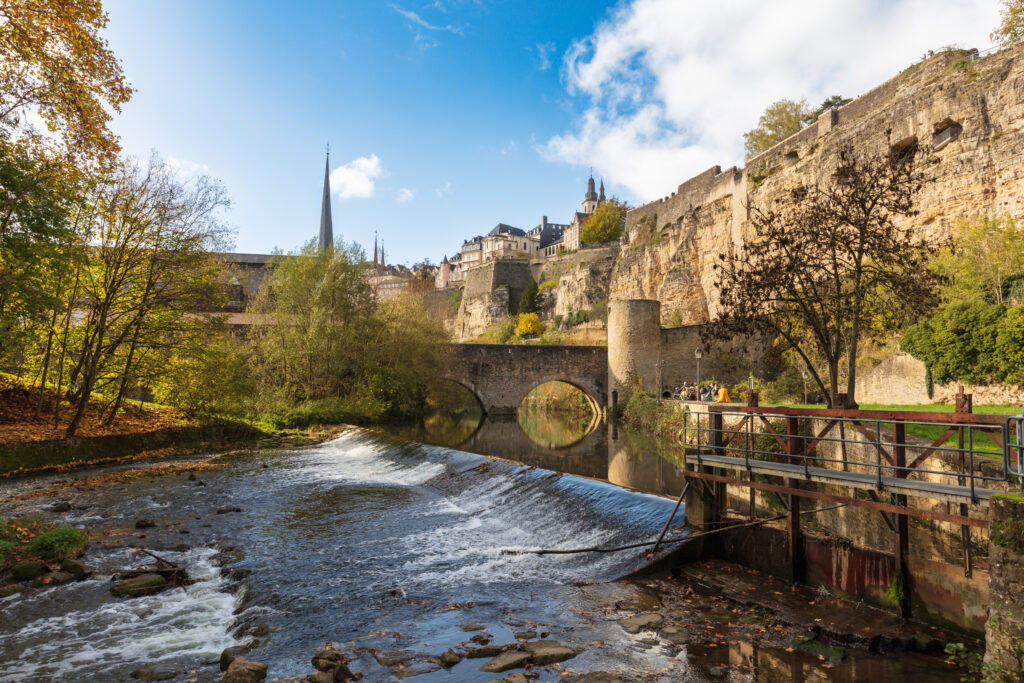
The Bock and Pétrusse casemates are the largest casemates in the world. They are Luxembourg's most popular tourist site and have been a UNESCO World Heritage Site since 1994.
Casemates du Bock. Built from 1745 onwards and carved out of the rocks of the Bock fortress, they were underground galleries used as refuges, barracks and communication routes for soldiers and citizens in the event of attack. They covered an area of 1,100 m². The main casemate, measuring 110 meters long and 7 meters wide, offers a fascinating insight into military life at the time. Today, the site allows visitors to explore the ingenuity and military might of yesteryear, while offering breathtaking panoramic views over the valley.
Casemates de la Pétrusse. Over the course of successive occupations, the town has been transformed into one of the world's most imposing fortresses, with three fortified belts and an exceptional underground network of 23 km of casemates. The first were built in 1644, under Spanish rule. Then, from 1745 to 1746, the Austrians reinforced the defensive system with the Bock casemates. All this quickly earned the town the nickname of the "Gibraltar of the North".
Discover Luxembourg's must-see places on ane-bike tour that you can book here: a fun experience for all levels!
2. The Grand Ducal Palace
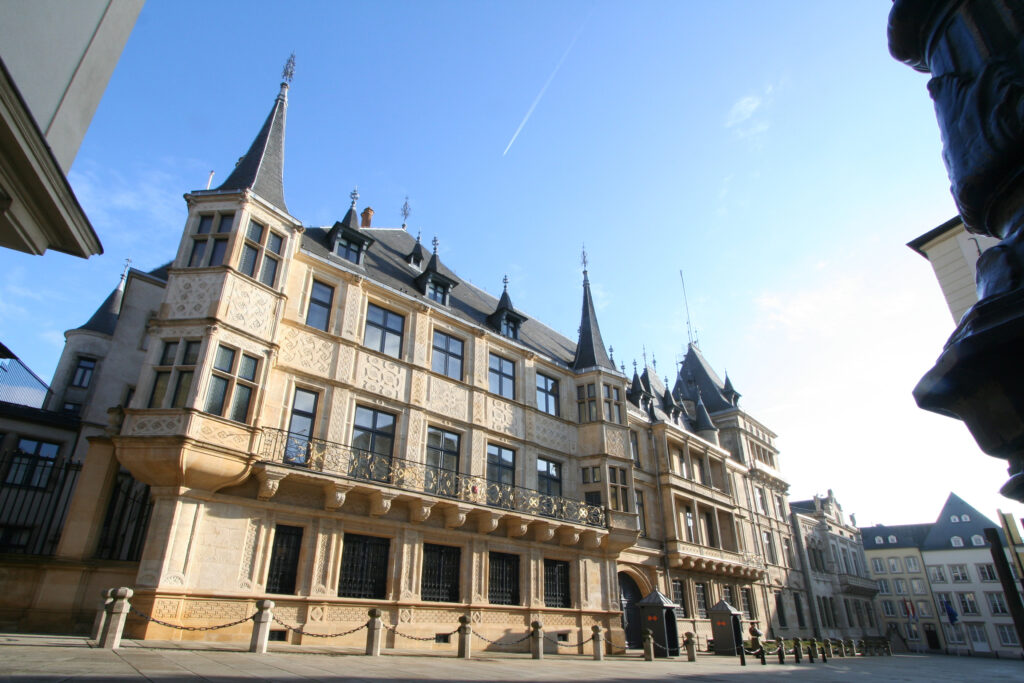
Grand Duke Henri's residence in the old town dates back to the 16th century, and was built by the town's master builder, Adam Roberti, on the site of a former Franciscan church. Hard hit by a gunpowder explosion in 1554, the palace, then used as the town hall, was rebuilt twenty years later. The left wing, decorated with arabesque motifs, remains today in its original form. In 1859, the Chamber of Deputies added an extension to the right of the palace. Originally intended as the official residence of the King's Governor in the early 19th century, it became the residence of the Grand Duke in 1890. Restoration work in the 1990s gave the building its current appearance. In addition to its Flemish Renaissance style, the façade reveals Hispano-Moorish influences. The solemn changing of the guard in front of the palace takes place only once a month, exclusively from June to September. In July and August, the palace opens its doors to Luxembourgers and tourists alike, who can admire its interior.
Click here tobook your guided tour of Luxembourg , including the underground tunnels known as "casemates", Neumünster Abbey and the history of the Grand Duchy and its founder, Siegfried.
3. Mudam, the Grand Duke Jean Museum of Modern Art
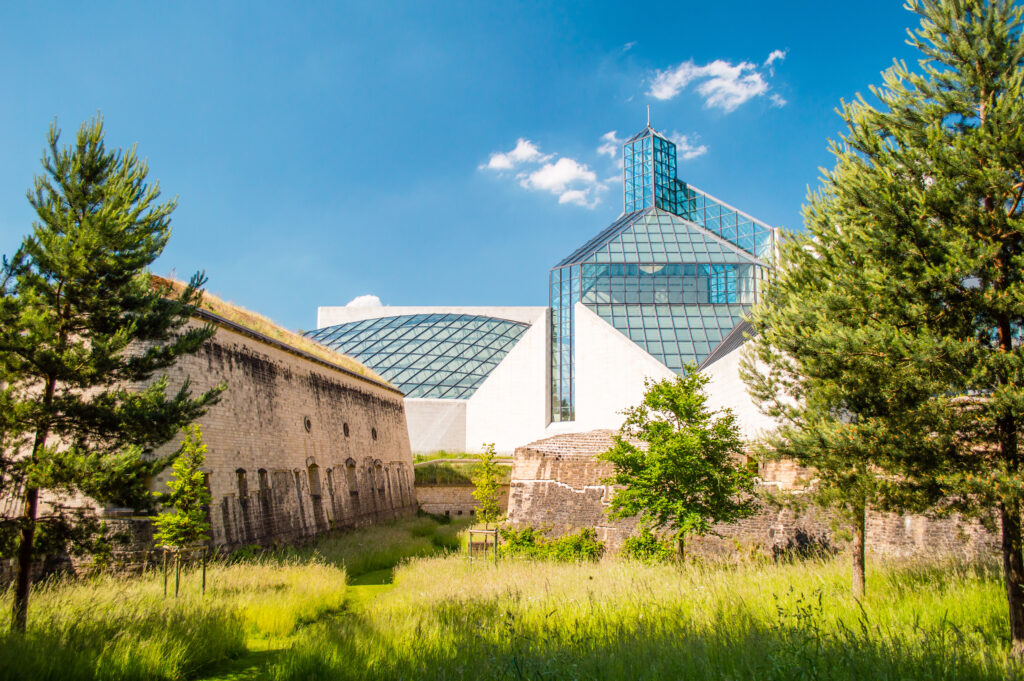
The Mudam is one of Luxembourg's must-see contemporary art venues. Designed by the famous Sino-American architect Ieoh Ming Pei, the magnificent building stands out for the scale of its glass roof. Standing on the historic site of Dräi Eechelen, overlooking the splendid historic center of Luxembourg City, the museum embodies the country's openness to modernity. Firmly focused on the younger generation of artists, the museum's acquisition policy explores current trends in photography, painting, drawing, video, new technologies, fashion, design, graphics, sound and architecture. The collection, which also includes works of reference, is revealed through temporary exhibitions. Guided tours are organized on a regular basis.
Book your ticket for the Mudam Museum of Contemporary Art, including audio guide,right here!
4. Vianden Castle
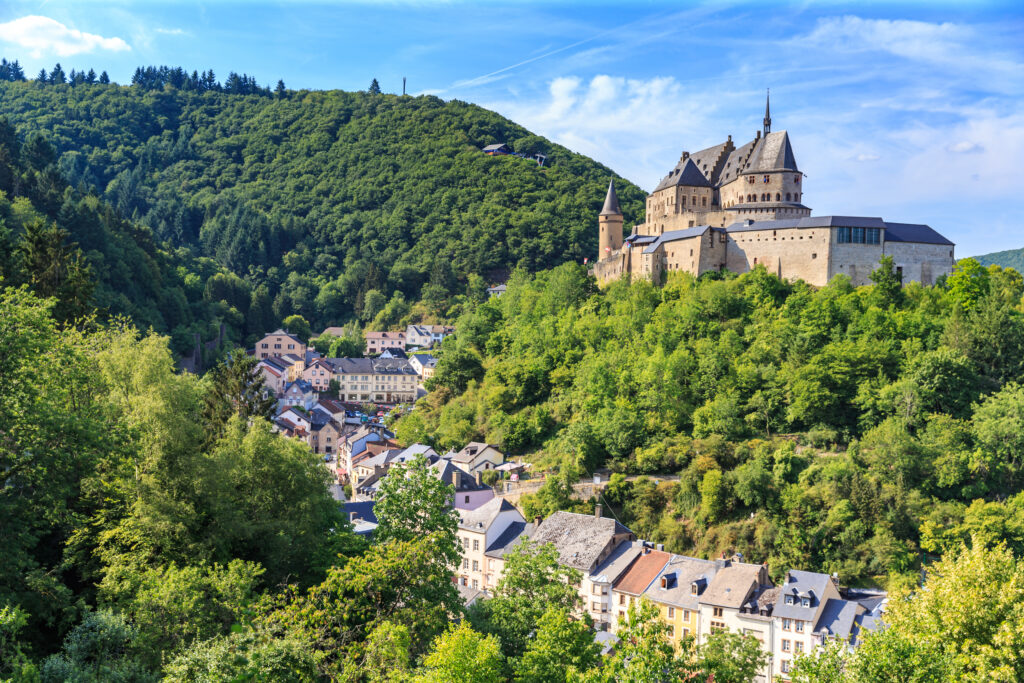
Built between the 11th and 14th centuries, on the foundations of a Roman castel and a Carolingian refuge, Vianden Castle is one of the country's most impressive medieval buildings. In fact, it was named one of the most beautiful castles in the world by CNN. Overlooking the town and the Our valley, it stands out for its circular enclosure. The residence of the Counts of Vianden until the 15th century, it changed hands several times before being acquired by Grand Duke Adolphe of the Nassau dynasty in 1890. As it passed into the hands of the Grand Ducal family, it gradually fell into ruin. Acquired by the Luxembourg State in 1977, it was the subject of a vast restoration project aimed at faithfully rebuilding it in the neo-Gothic spirit of the 19th century, completed in 1982. Today, visitors can explore the architectural ensemble, discovering in particular the inner courtyard, the horsemen's room and the monumental gallery, also known as the Byzantine gallery. The castral chapel, a true gem of Romanesque-Gothic architecture, has been magnificently restored. In the bailey, you'll find an information center, a store and a tavern.
Book your ticket to Vianden Castlehere : you'll also enjoy spectacular views over the medieval town of Vianden.
5. Esch-sur-Sûre
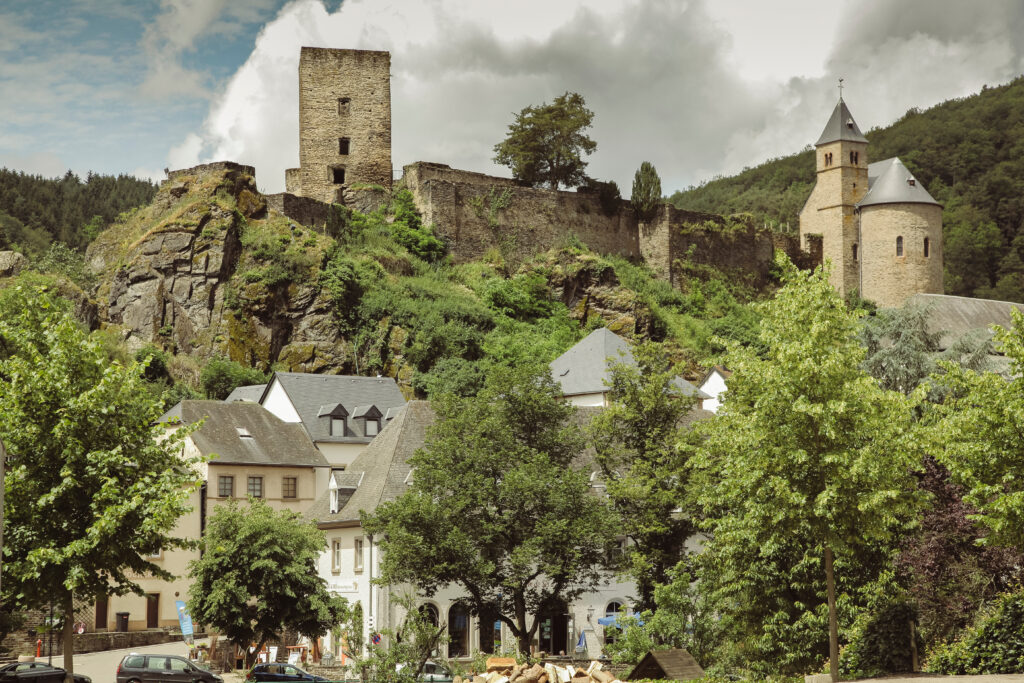
Esch-sur-Sûre, nestled in the heart of the mountains and surrounded by the river Sûre, has a romantic charm that makes it a must-see destination for lovers of peace and quiet in the heart of nature. The village's origins date back to 927, when Meningaud built a castle to guard against Hungarian invasions. In the 14th century, the village was fortified, but part of the ramparts were destroyed in 1671. Today, in the shadow of its castle ruins, the village reveals winding lanes lined with old Ardennes houses, whitewashed and topped with slate roofs, adorned with moss. It's a great place to get away from it all!
6. The Chemin de la Corniche
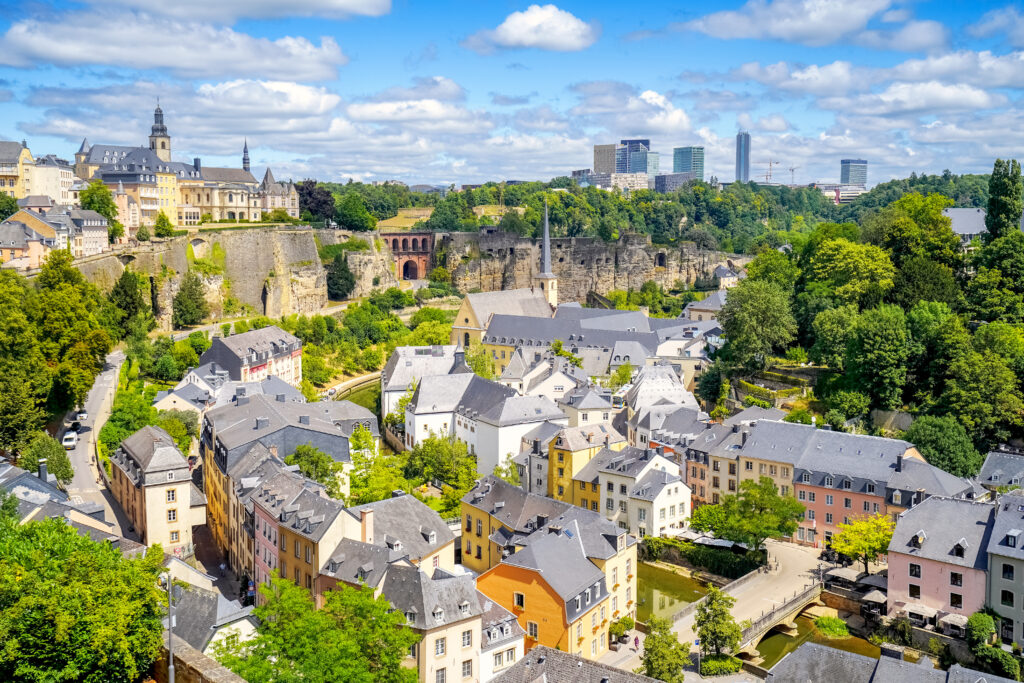
It's reputed to be the most beautiful balcony in Europe! The Chemin de la Corniche offers breathtaking views of the citadel, Neumünster Abbey and the whole of the Grund lower town. The walk starts at the Plateau du Saint-Esprit and follows the ramparts to the rocky promontory of the Bock, where Count Sigefroi erected a castle in 963, giving rise to the future fortress of Luxembourg. The old fortifications, dismantled after the Treaty of London in 1867, reveal a unique perspective over the Alzette and Pétrusse valleys. An unmissable stroll!
7. The Mullerthal Trail
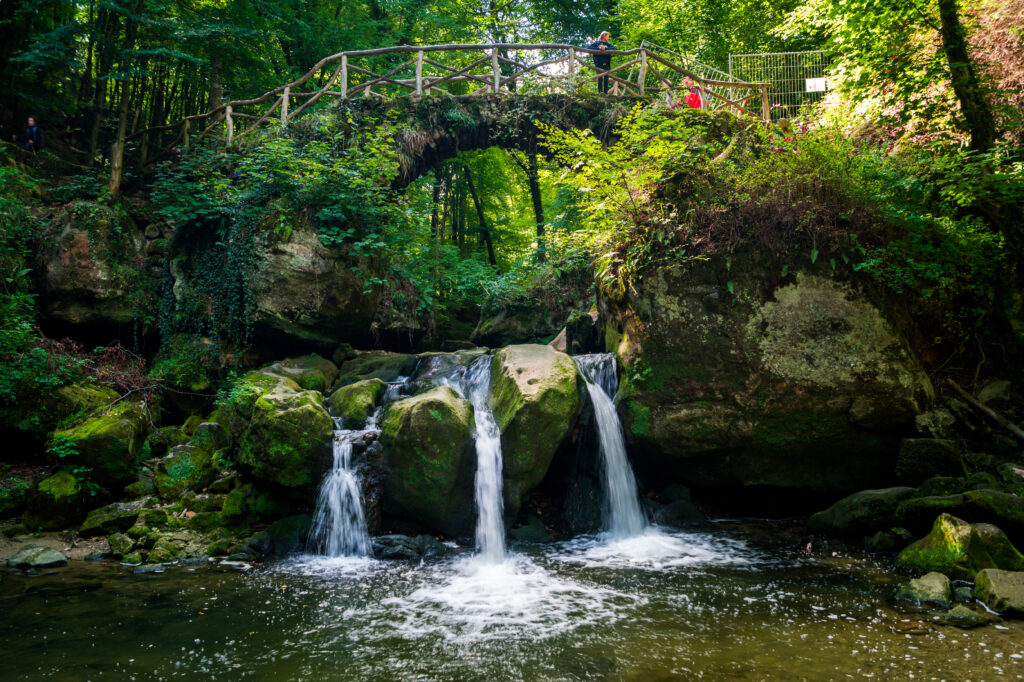
This is one of Luxembourg's most beautiful hikes! It takes in some remarkable natural sites, including the Schiessentumpel waterfalls. This beautiful adventure is the result of a long tradition of hiking in the region. Its three itineraries (38 km, 26 km, 36 km) will delight both sporty walkers on uneven terrain and deep nature lovers. A well-designed Mullerthal Trail Pocket Guide is available from tourist information centers. The entire 112 km Mullerthal Trail takes between 3 and 6 days to complete. In its entirety, the Mullerthal Trail takes in all the region's outstanding natural sites, such as the Loup gorge, the Schiessentumpel waterfalls, the Manzebach river and the Hallerbach valley. The entire route is beautifully laid out and signposted, making it accessible to beginners and advanced hikers alike.
8. Luxembourg architecture
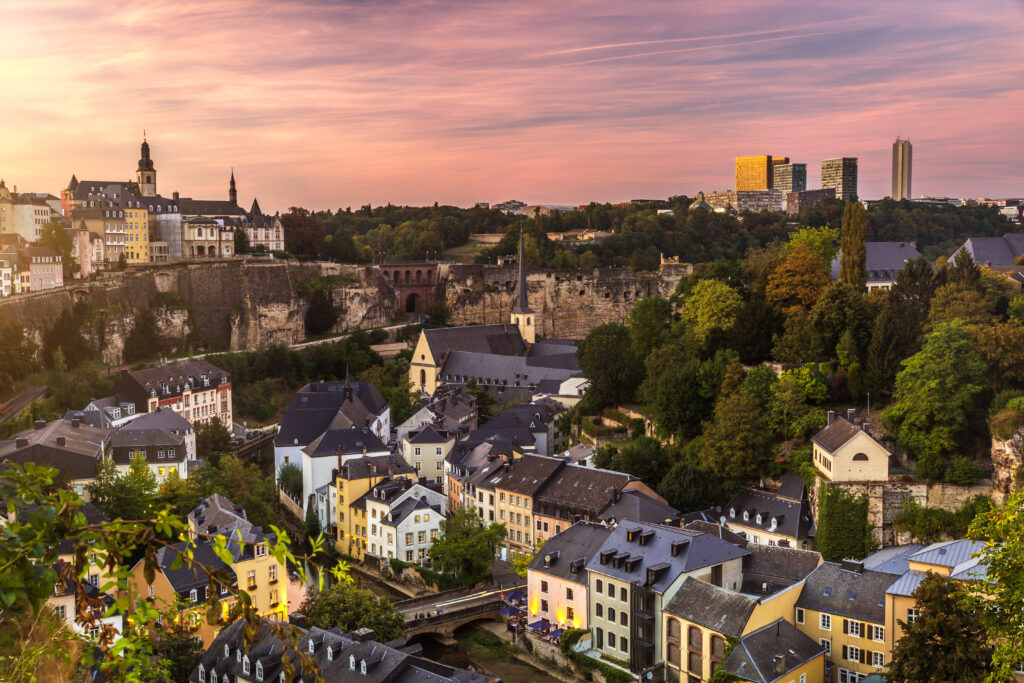
Luxembourg marvels at the exceptional diversity of its architectural heritage. At the crossroads of European influences, blending urbanism and rurality, it presents a contrasted architecture, establishing a harmonious dialogue between past and future. Testifying to its strategic role since Antiquity, the country is home to countless castles and remains. The fortress of Luxembourg City and its historic quarters, where you can take a self-guided tour, have been listed as a UNESCO World Heritage Site since 1994. Luxembourg also abounds in religious treasures, from small pilgrimage chapels to imposing churches, offering a journey through styles from Romanesque to neo-Gothic to flamboyant Baroque. Industrial heritage and traditional housing complete this wealth, expressed today in contemporary creations that reflect remarkable creativity. Discover the treasures of the Grand Duchy today!
9. Echternach
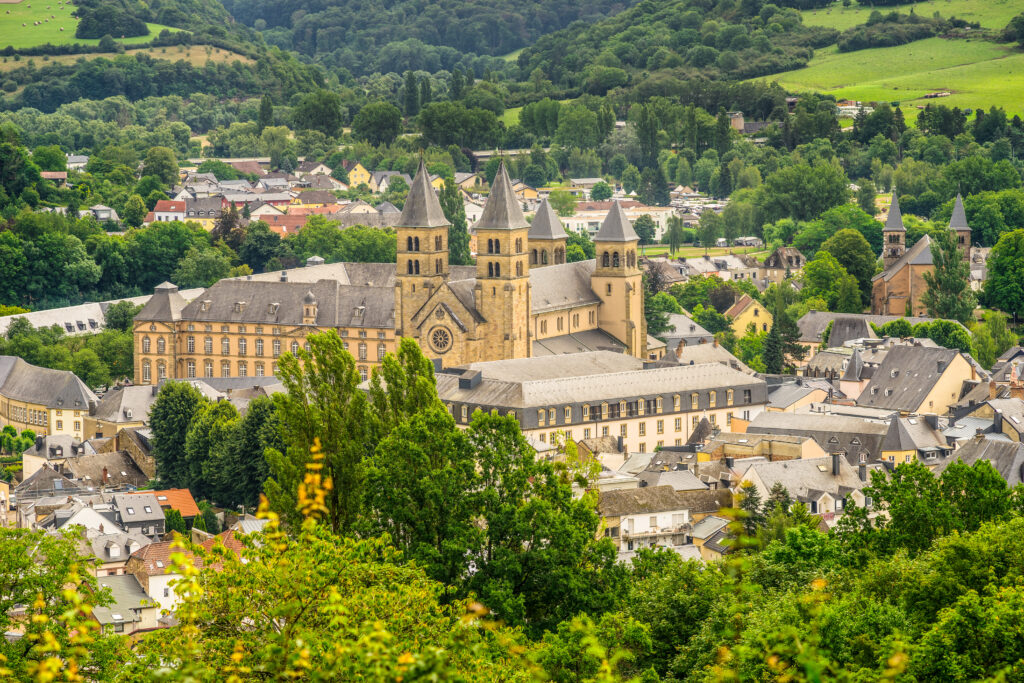
In Echternach, as early as the 7th century, a modest monastery was home to twelve itinerant monks. In 698, under the aegis of Abbess Irmina of Oeren, monk Willibrord was granted a convent, two chapels and a hospice - a first north of the Alps. Thus began the transformation of Echternach into a major religious center. Over the centuries, the Echternach scriptorium became renowned for its illuminations. By the early 11th century, Echternach Abbey was one of the richest in Europe. Today, Echternach, a city steeped in history and modernity, is one of the most charming in the country. It hosts a wide range of events, including music and folklore, throughout the year. With a wide range of accommodation, a lake and, above all, countless hiking trails, it attracts many visitors. In particular, you'll need to cross the Sûre to discover magnificent views over the city.
Discover Luxembourg and admire the surrounding countryside ona panoramic tour that you can book here including a visit to Vianden Castle and an exploration of the old town of Echternach.
10. Bourscheid Castle
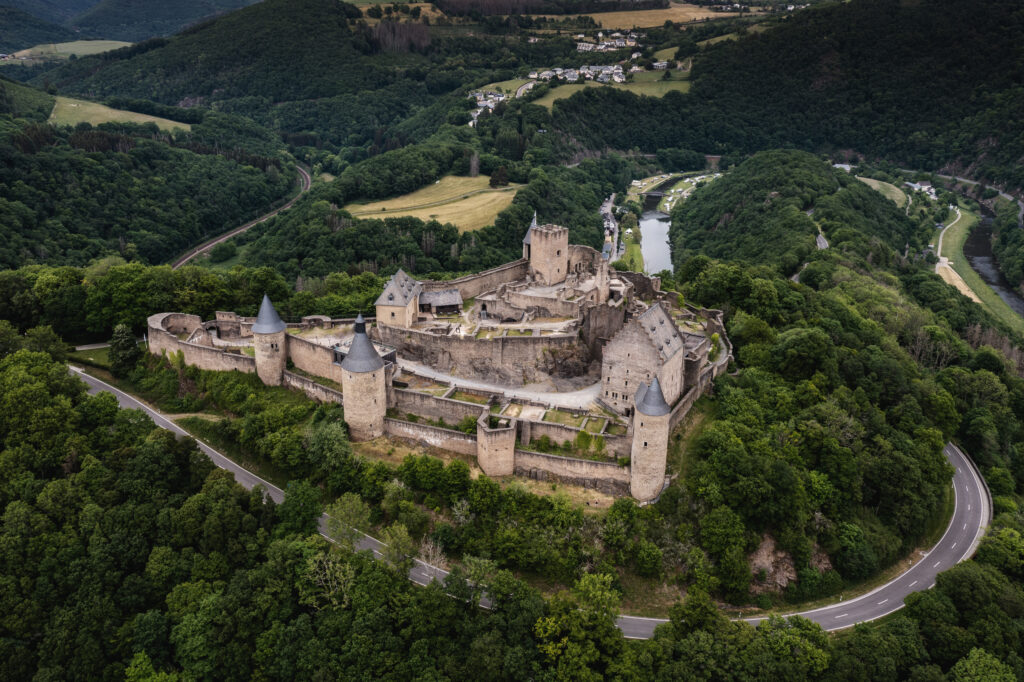
The name of Lord Bertram von Bourscheid first appears in 1095, but Bourscheid Castle is thought to have been built around the year 1000, on foundations dating from earlier times. Perched 150 meters above sea level on a rocky outcrop and surrounded by waterways, the castle offered an unobstructed view of the entire Sûre valley, and was surrounded by an enclosure with 11 towers. It has undergone numerous extensions over the centuries, reflecting different architectural styles. The surrounding wall dates from 1350-1384, the Stolzembourg house was built in 1384, the bailey in 1477, and the keeps on the south and east sides date back to 1498, while artillery bastions were added in the 16th century. Only the porter's house and Stolzembourg's house have been rebuilt to the original design. A visit to this castle, nestled in a green setting, is a must. Victor Hugo, won over by its beauty on September 20, 1865, described it as follows: "We wander through the ruin. I draw it. It is admirable. It's an enormous uproar of walls and towers [... ], the view is splendid."
11. Saint-Maurice and Saint-Maur abbeys
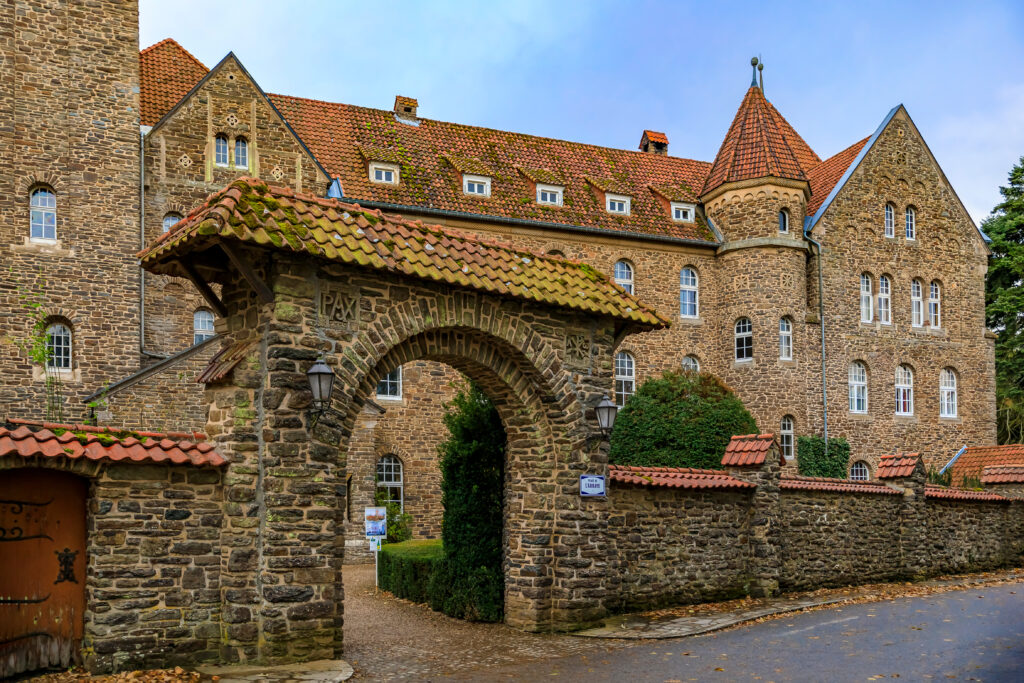
Built between 1908 and 1910, the Abbey of Saint-Maurice et Saint-Maur is a superb neo-Gothic Benedictine abbey set back high above the city, offering remarkable visibility for miles around. The monks who live here lead a life dedicated to prayer and meditation, following the rule of Saint Benedict. In addition to its monastic role, the site also hosts spiritual retreats. Only men are accommodated at the abbey. A gîte d'étape is also available for groups in an adjoining building. A store sells local products such as coffee and apple juice produced at the abbey. There is also a sacred art bookshop on site. Although the tour is limited, the crypt to the left of the main entrance is easily accessible, presenting an interesting exhibition on monastic life through documents and photographs. Access is on foot via the montée de l'abbaye, an 800-meter ascent from the downtown church of Sainte-Côme et Saint-Damien. Every first Monday of the month, after daily mass, the Tourist Office offers a guided tour led by a monk from the abbey, covering the history of the building and daily life (booking required).
12. Clervaux castle
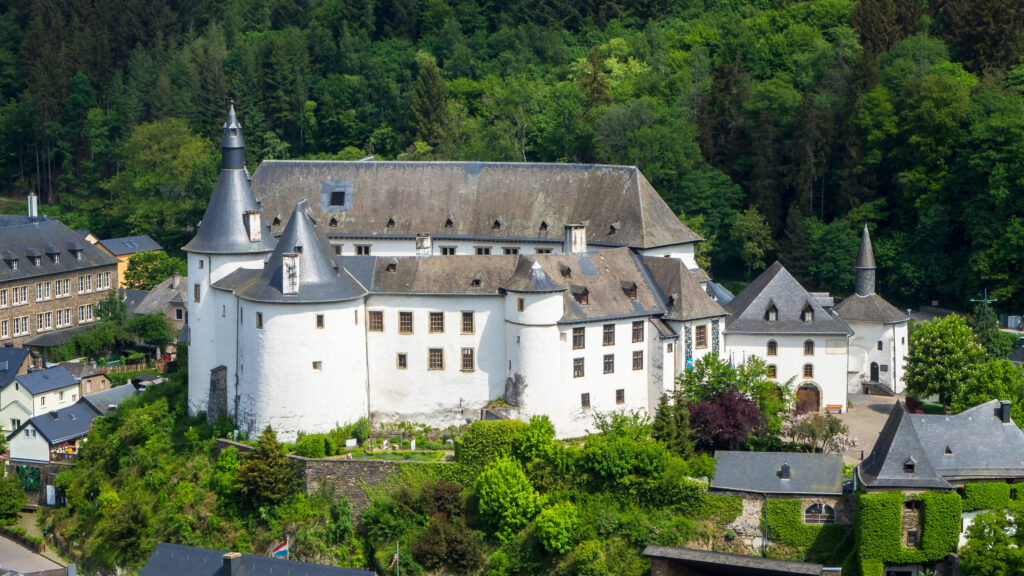
Located in the heart of the town, the feudal castle of Clervaux was founded in the 12th century by the Counts of Clervaux, who first enlarged it in the 13th century. In the early 15th century, to protect the southern flank of the castle, Frederick I had the huge Burgundy Tower built. In 1634, Count Claude de Lannoy ordered the construction of reception halls in the northern part, including the Spanish-Flemish Salle des Chevaliers. Barns, stables and administrative buildings were added by Albert Eugène de Lannoy in 1660 and, almost ten years later, the concierge's quarters (now occupied by a restaurant). In 1721, new stables were added to the complex. But in 1887, Albert Eugène de Lannoy's work was demolished and the stones reused to build a seigniorial residence for the Count of Berlaymont. The château was set on fire during the Battle of the Bulge and remains in ruins. At the end of the war, it became the property of the State, which restored it. Today, it houses the Clervaux town hall and several museums: the Luxembourg Castle Model Exhibition, the Battle of the Bulge Museum, featuring weapons and memorabilia from the Ardennes offensive (1944-1945), and the UNESCO World Heritage photographic exhibition "The Family of Man" by Edward Steichen.
13. The Family of Man" exhibition
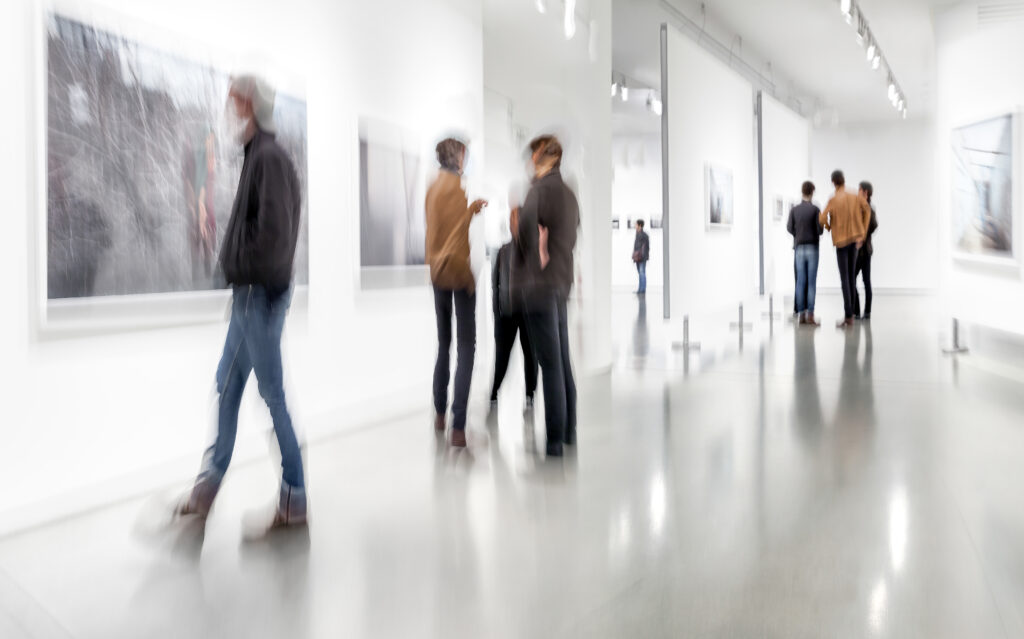
Edward Steichen (1879-1973) was a photographer, magazine editor, gallery owner and curator of the Museum of Modern Art (MoMA) in New York. He is best known for creating "The Family of Man" exhibition for MoMA. His ambitious project aimed to explore human nature through the eyes of man, and to illustrate the links that unite them. Starting in 1951, he put out a call to photographers around the world. From the four million images received, Steichen selected 503 photographs by 273 artists from 68 countries, including such greats as Henri Cartier-Bresson, Robert Capa, Dorothea Lange, Robert Doisneau and Irving Penn. The collection was completed in 1955 and exhibited at MoMA in New York. Travelling versions toured the world until 1962, attracting over 9 million visitors. In 1966, the last existing version was donated to Steichen's native Grand Duchy by the US government, and the exhibition was moved to the Château de Clervaux. The current exhibition has been redesigned to ensure optimum conservation of the photos and to highlight the work of Edward J. Steichen.
14. What to do in Luxembourg? Hiking
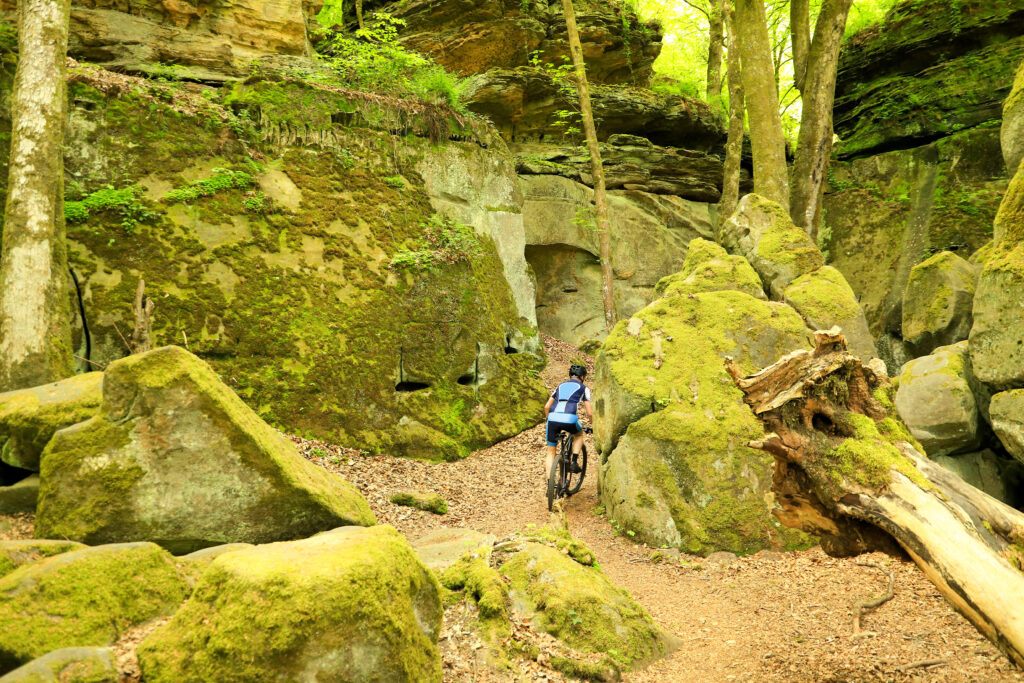
The Grand Duchy of Luxembourg is particularly renowned for hiking! In addition to its three nature parks (Haute-Sûre, Our and Mëllerdall), the country abounds in reserves, lakes and gardens. The five regions of the country, which features in our top 10 eco-destinations in the world, boast numerous marked trails, including the Mullerthal region, often referred to as Luxembourg's Little Switzerland, and the Luxembourg Ardennes (Oesling). For most of the walks, light equipment is all that's needed - just good shoes. Families can enjoy exploring the country's many trails. For longer hikers, multi-day itineraries with stages are available. Whatever their level of difficulty, Luxembourg's trails are the ideal way to explore the country, discover its nature and appreciate its charm. In a word, warm up!
15. Luxembourg bistronomy
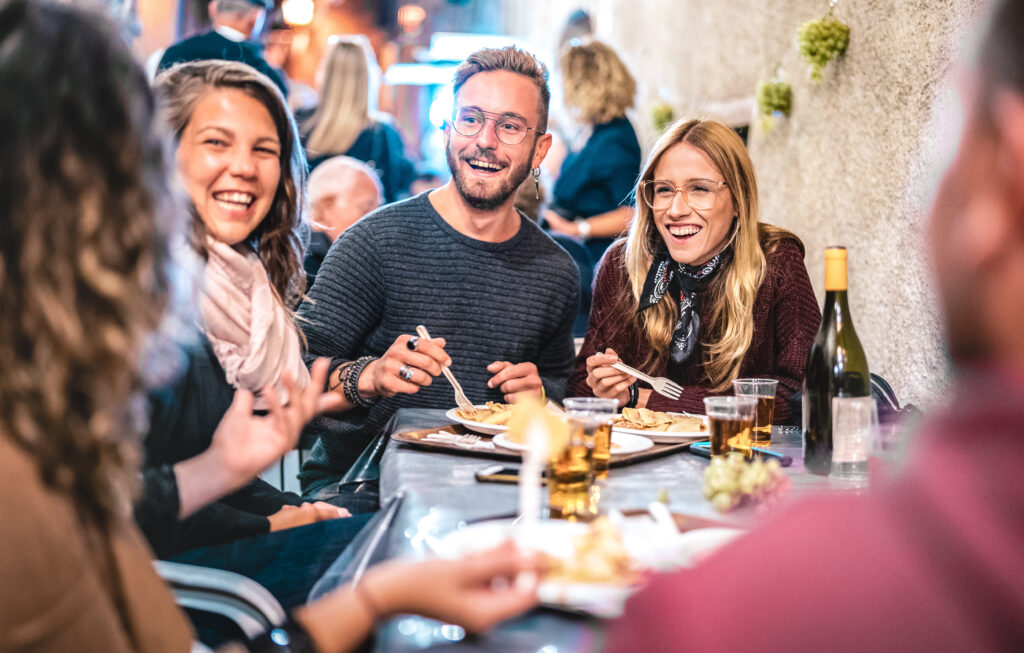
Although Luxembourg cuisine is often described as simple and rustic, the Grand Duchy is full of good places to eat! The current trend is undeniably towards bistronomy: chefs, using local produce, use their imagination to offer refined international cuisine, all in tastefully decorated, well-kept surroundings. In line with contemporary trends, many restaurants offer a diversified menu including vegetarian options. Finally, the country boasts a dozen Michelin-starred establishments, whose renown extends far beyond its borders. Bon appétit!
What to do in Luxembourg for two?
There's no shortage of things to do in Luxembourg with your partner. Stroll hand in hand through Luxembourg's old town, along the Chemin de la Corniche, considered to be the most beautiful balcony in Europe, visit the castles of Clervaux, Vianden or Bourscheid, the Benedictine abbeys of Saint-Maurice and Saint-Maur and set off on the hiking trails, all of which offer splendid views.
What to do in Luxembourg in December?
In December in Luxembourg, there's plenty to do in the way of festive shopping and festivities. To celebrate the magic of Christmas, Luxembourg City - one of our top 10 cities to spend the festive season in - and the LCTO present Winterlights, a series of events including concerts, exhibitions and festive shows. From the start of the festivities to December 24, two Christmas markets will be held in Place de la Constitution and Place d'Armes. A magical atmosphere awaits you!
How to visit Luxembourg in 3 days?
Day 1: Discover the historic heart of Luxembourg City, home to most of the city's museums (with the notable exception of the Mudam and the Dräi Eechelen Museum, located on the Kirchberg plateau), as well as the Grand Ducal Palace, the Church of Notre-Dame and the city's main shopping street, the Grand-Rue. It's built around the two main squares, Place d'Armes and Place Guillaume II, Luxembourg's nerve centers. More commercial and less residential than its neighboring districts, this area is home to numerous hotels and restaurants. In the evening, gourmets won't want to miss a visit to the gastronomic islet, one of whose entrances is on Rue de l'Eau, behind the Grand Ducal Palace.
Day 2. Plan a hike, especially in the Mullerthal region and the Luxembourg Ardennes. There are plenty of free brochures to download from the Internet, and you can also find them at local tourist offices.
Day 3. Visit the Château de Clerveaux, then marvel at Edward Steichen's Unesco World Heritage photographic exhibition "The Family of Man".


